Sublime is a personal knowledge management tool that focuses on capturing “whoa” moments and makes it easy to discover more of them.
Sublime…
- features AI-powered content discovery and smart search functionality.
- offers organization through cards, collections, and infinite canvases.
- has a browser extension and an iOS app to capture and discover anything, anywhere.
- can import existing highlights from Kindle and Readwise.
- offers private and public saving of cards and collections.
- has built a wonderful community that makes it a unique place to spend time.
Sublime is in early access. You can request a free trial through their Slack community or sign up for a paid plan. Sublime lets you choose a price that works for you.
Content Capture
The Sublime Browser extension not only makes it easy to save web highlights, images, and bookmarks, but it also allows you to retrieve Sublime content related to on a given page.
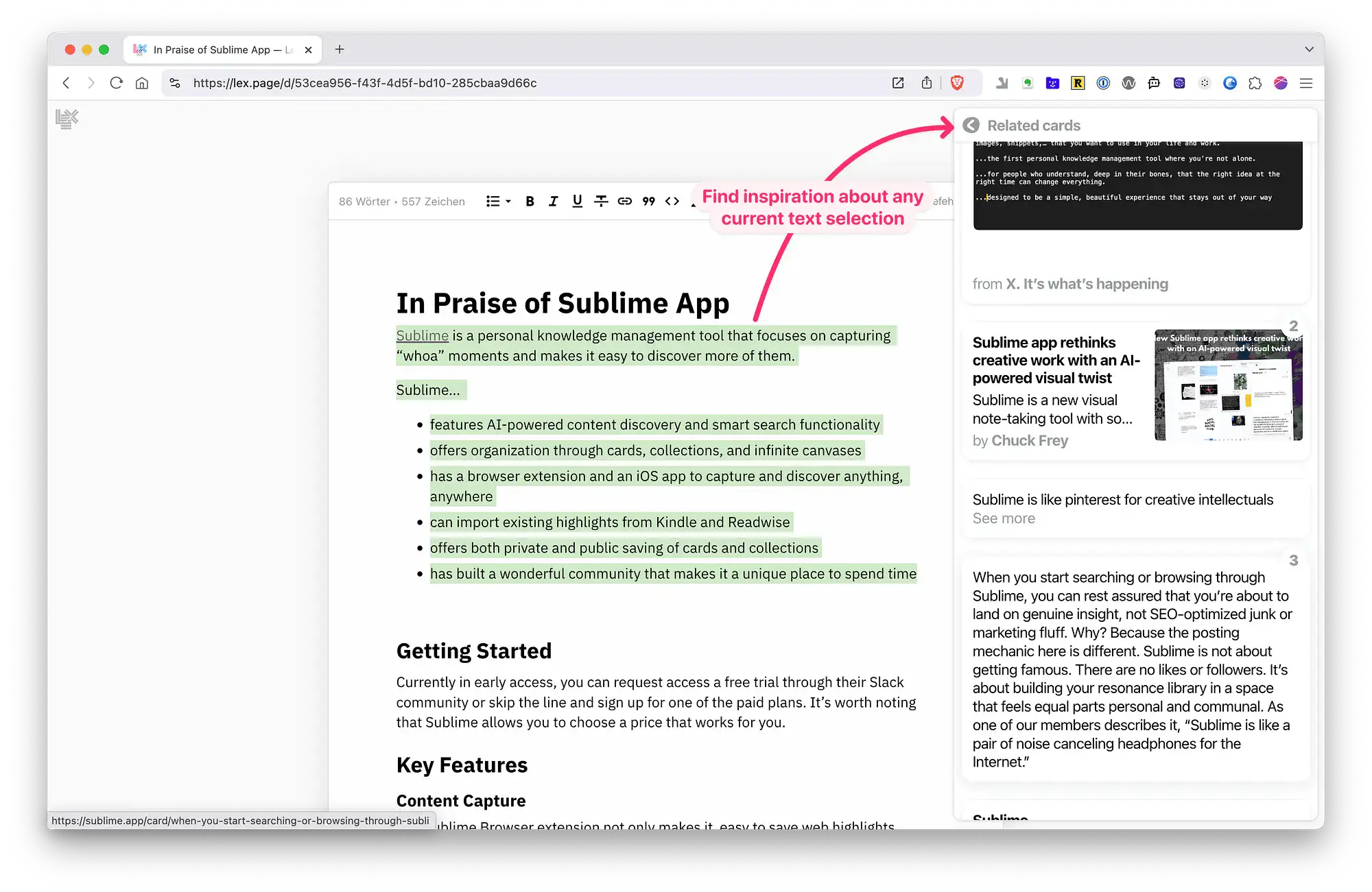
If you’re worried about starting your curation from scratch, I have good news: Sublime can import existing highlights from Readwise and Kindle. I’ve got years’ worth of highlights in Readwise and it’s been a blast to rediscover and connect them in Sublime.
Discovery
Contextual Discovery through Related Cards
What made me go “whoa” the most is how Sublime invites me to lose myself in interesting thoughts and ideas through its contextual discovery mechanisms.
For any card, click a little arrow button to find related ones from the entire Sublime universe.
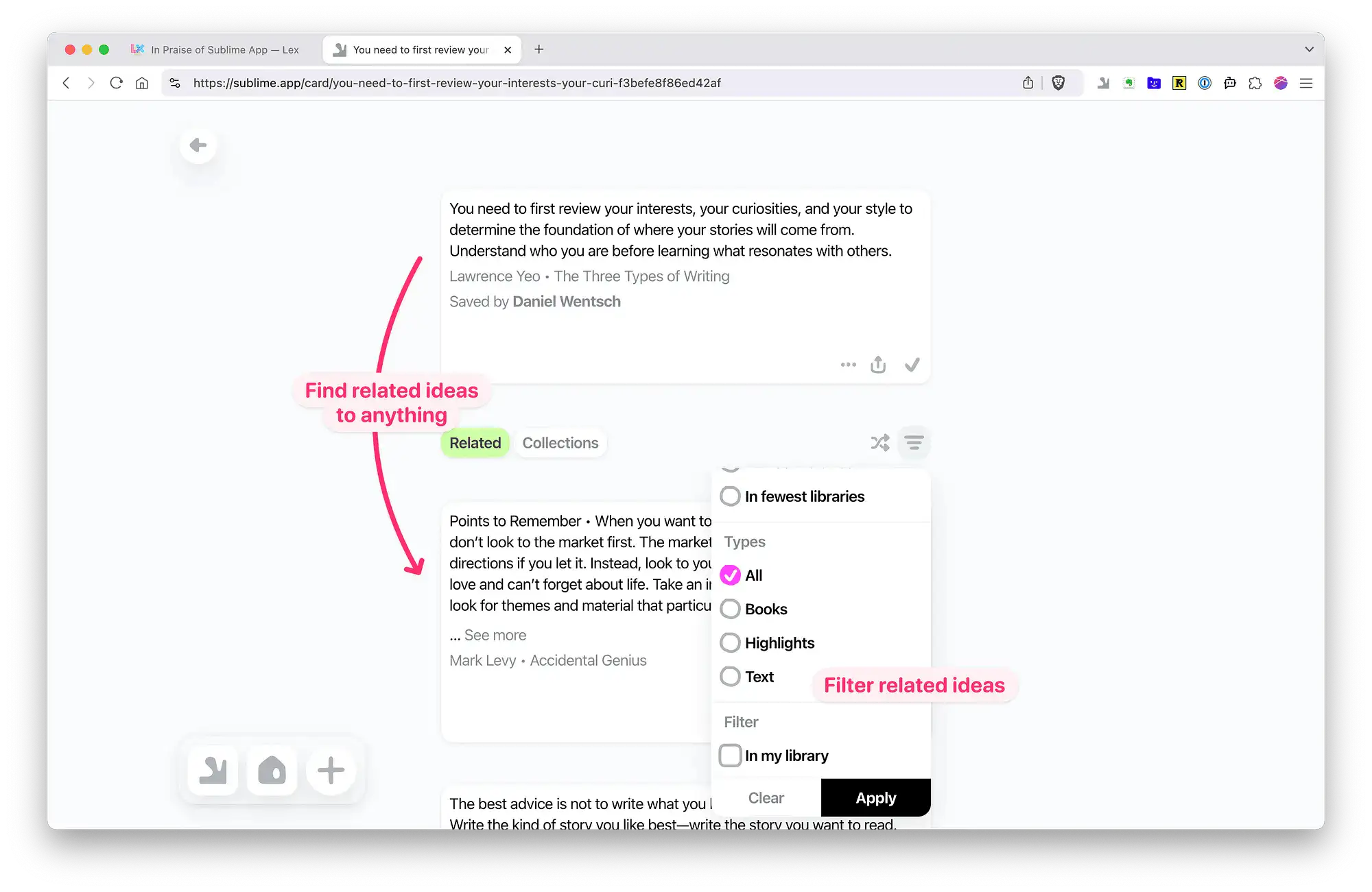
Contextual Discovery Anywhere on the Web
Sublime’s smart discovery isn’t limited to its platform. With the browser extension, you can select text anywhere on the web, hit Ctrl+R, and it pulls up cards related to your selection.
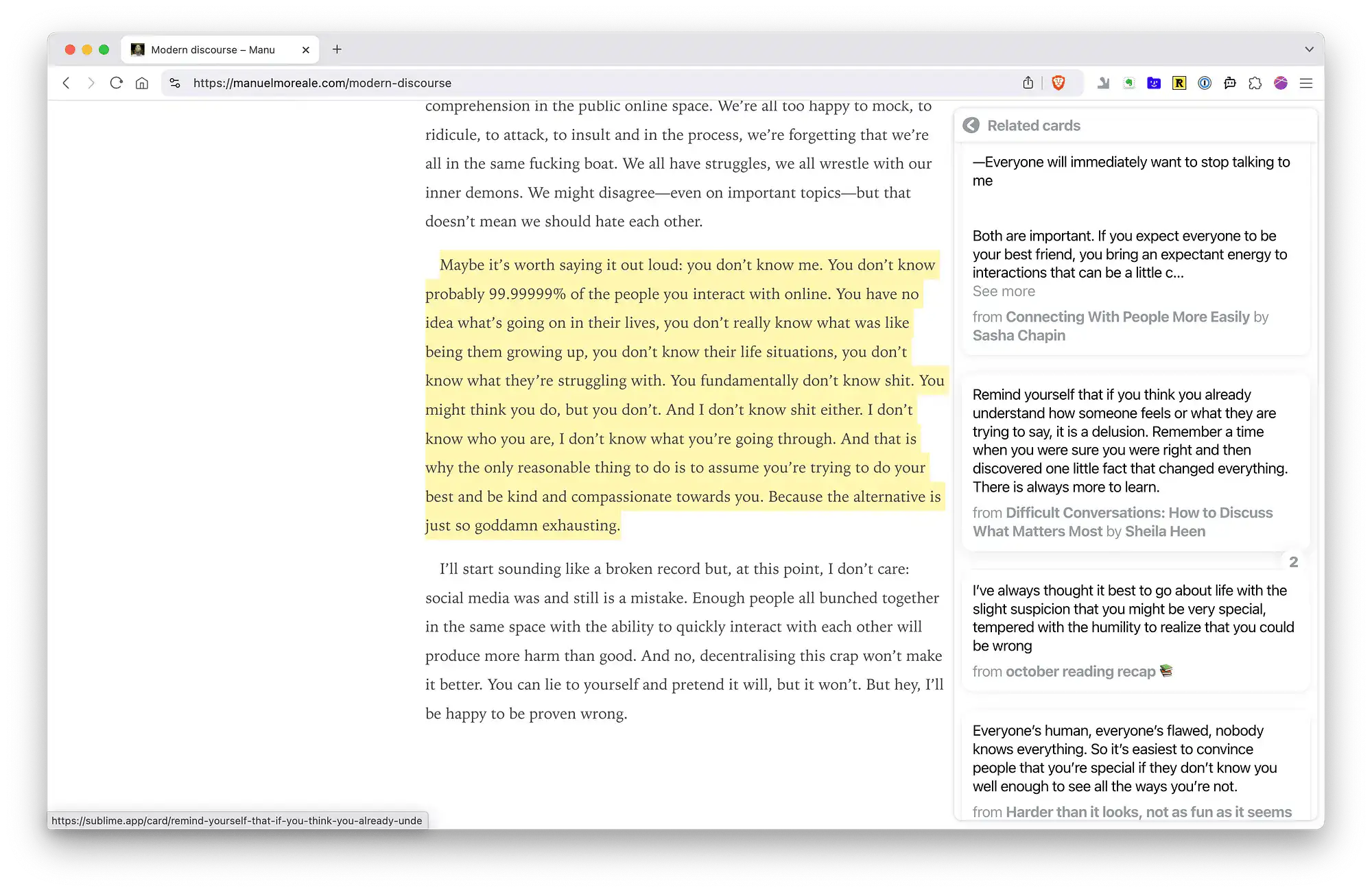
This works for both reading and creating text. When writing online, inspiration from Sublime’s library is a shortcut away.
Smart semantic search
Smart discovery happens within Sublime’s search. It brings up semantically relevant results using AI. See how it found the exact quote I was looking for without remembering anything about the literal text:
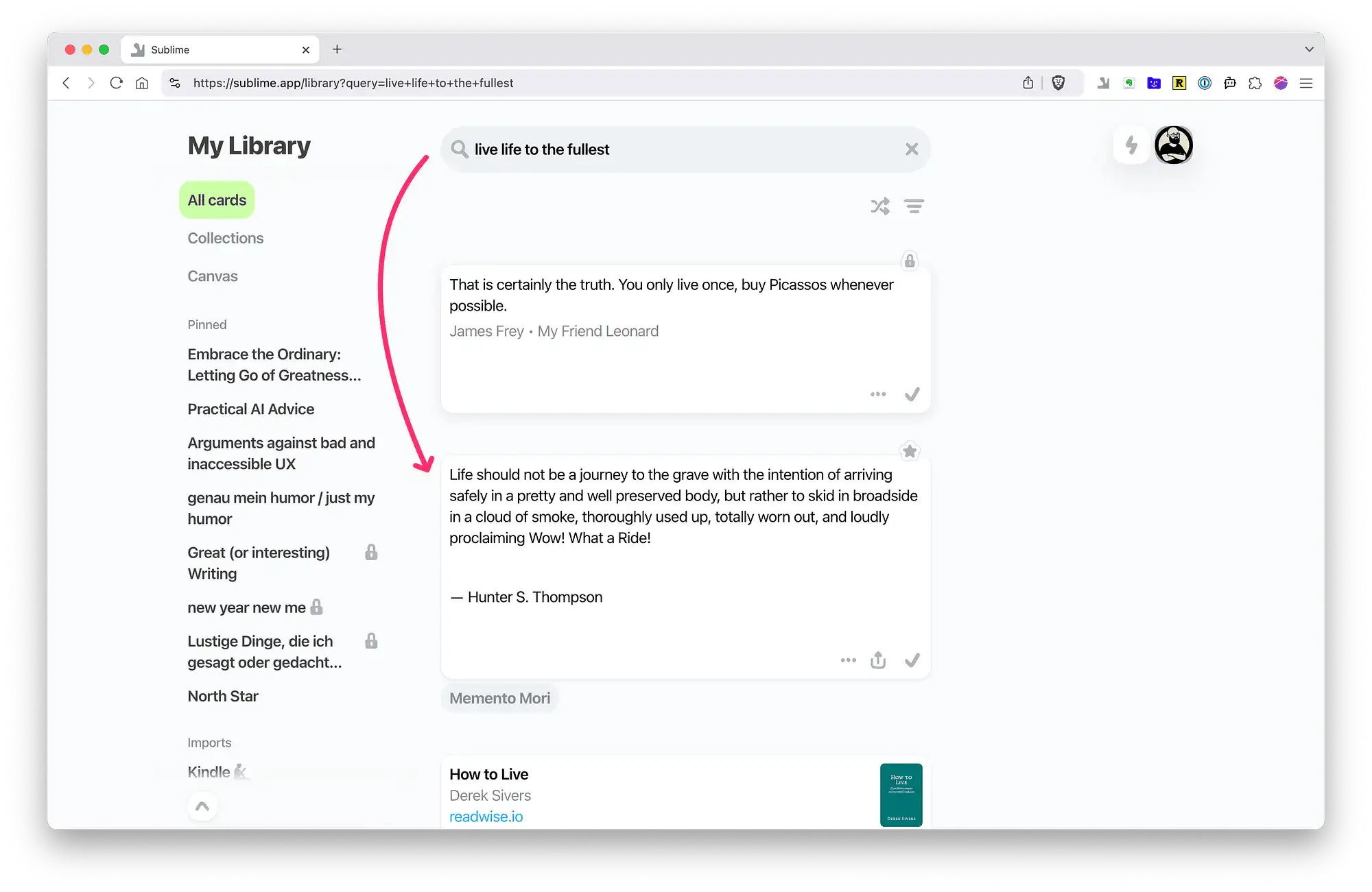
Collections
Sublime’s lingo for groupings cards is Collections. I like how it encourages me to create actionable collections, rather than guilt-tagging everything in a top-down approach. A card can belong to multiple collections, or none.
Collections have distinct special features:
- When you create a new, empty collection, Sublime magically suggests cards you might want to add.
- You can follow public collections of other users.
- Users can collaborate on shared collections, either as invitation-only or public ones accessible to any Sublime user.
- Collections can become canvases.
Visual Organization: Sublime Canvas
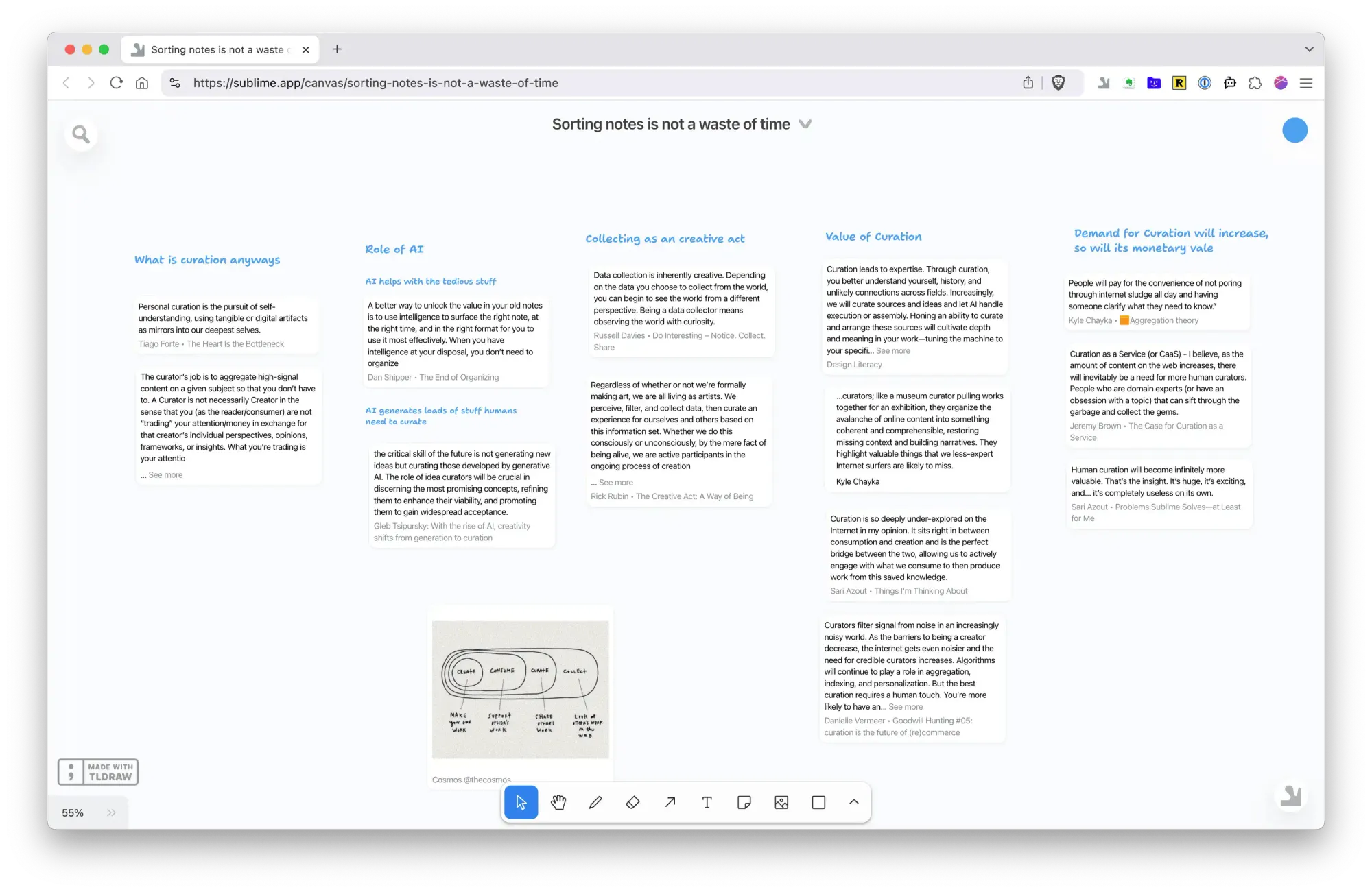
Sublime Canvas is an infinite board where you can freely place cards from your library or the entire Sublime universe. You can also complement them with doodles, text images, and connecting arrows.
You can turn any collection into a canvas. If you enable continuous sync, later-added cards will also be included on the canvas.
Here’s a peek into how I arrange ideas on a Sublime canvas and use its magic to find and filter related cards:
Wishlist
Here’s my little wishlist of thing that would make Sublime even more… sublime 🙂
- 🌘 Dark Mode: I really want to use Sublime at night, but the bright white interface makes it hard to do so. It should have an option to follow system preferences.
- 🍱 Masonry / Waterfall Grid view: Often times I want to see more at once. I imagine a two-dimensional, full-width view with different card size options. This would not only allow me to take in more at once, but also open new use cases to curate visual inspiration in Sublime. Good implementation examples are MyMind and Cosmos.
- ⌨️ CMD + K Quick Search Hitting a shortcut to open a smart modal that can quickly bring you to a collection, canvas or yield yield a full search for that term would be fan-tas-tic. I create collections all the time, but have a hard time finding them again (Go to collections page and search the long list). A good implementation example is Evernote, where the “Switch to…” menu can take you to Stacks, Notebooks, Tags, Notes or start a search.
- ⚡ Faster performance: It’s not that Sublime is horribly slow, but I can’t deny that I often notice “Ok, full page load in progress”. I would love if it felt a bit snappier and app-like.
These wishes being mostly of cosmetic nature or about quality of life improvements says a lot about the value Sublime already has today.
Sublime is unique.
- Instead of chasing hypergrowth, the Sublime team follows a mindful course, putting culture and community first.
- Instead of getting lost in tweaking systems, Sublime invites me to get lost in ideas.
- Instead of encouraging me to build complex systems, Sublime emphasizes discovery and connection.
- Instead of using AI to create generic, throwaway content, Sublime employs the tech to help me discover and connect good ideas.
Personal curation and AI-powered discovery create a unique experience that helps you not just collect information, but use it meaningfully.
Sublime offers a fresh take on personal knowledge management that’s both powerful and playful, whether you’re researching, writing, or collecting ideas.

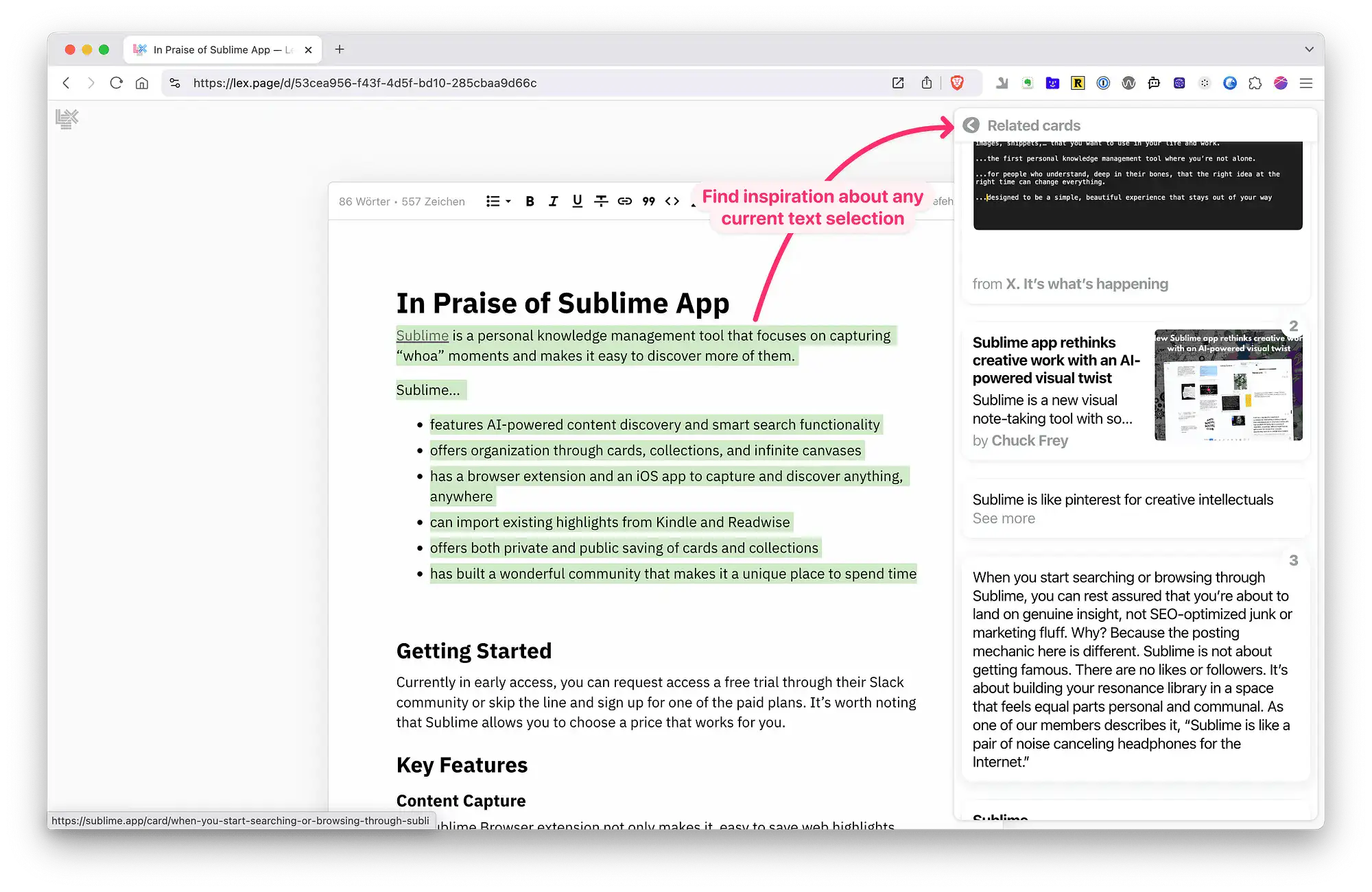
Discussion